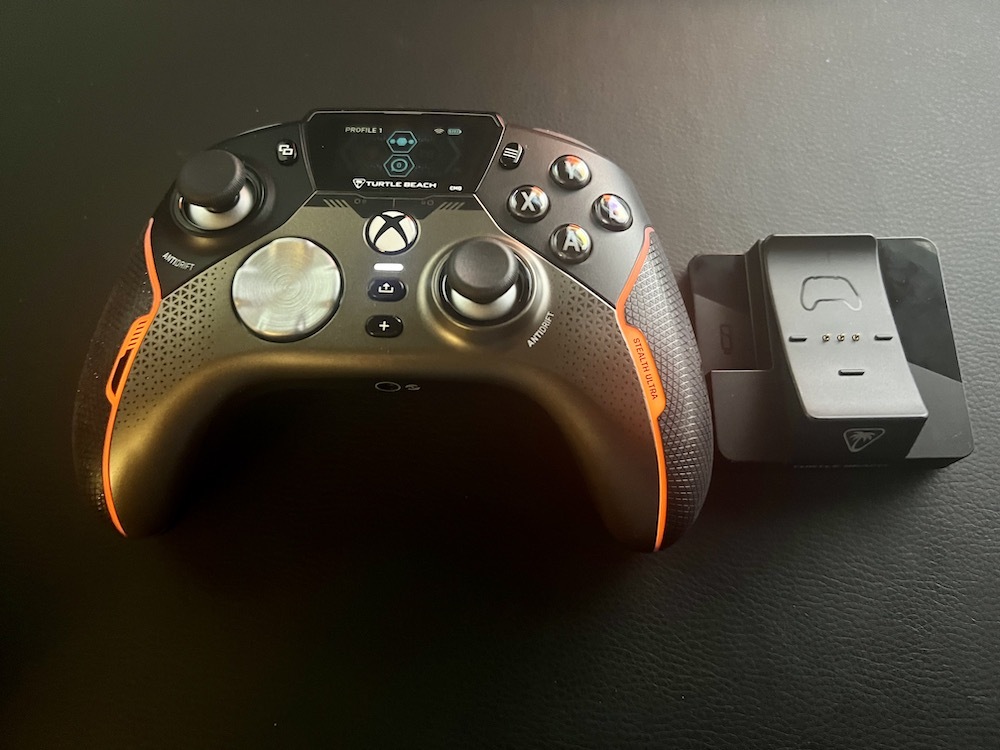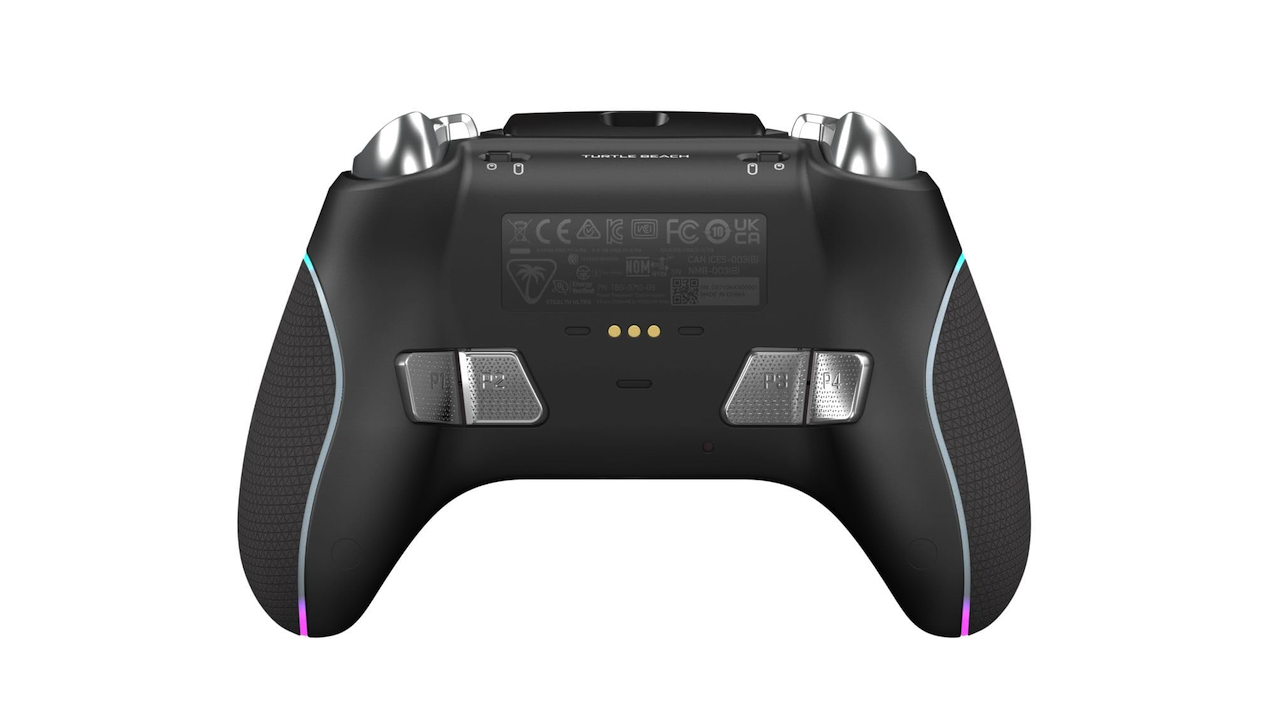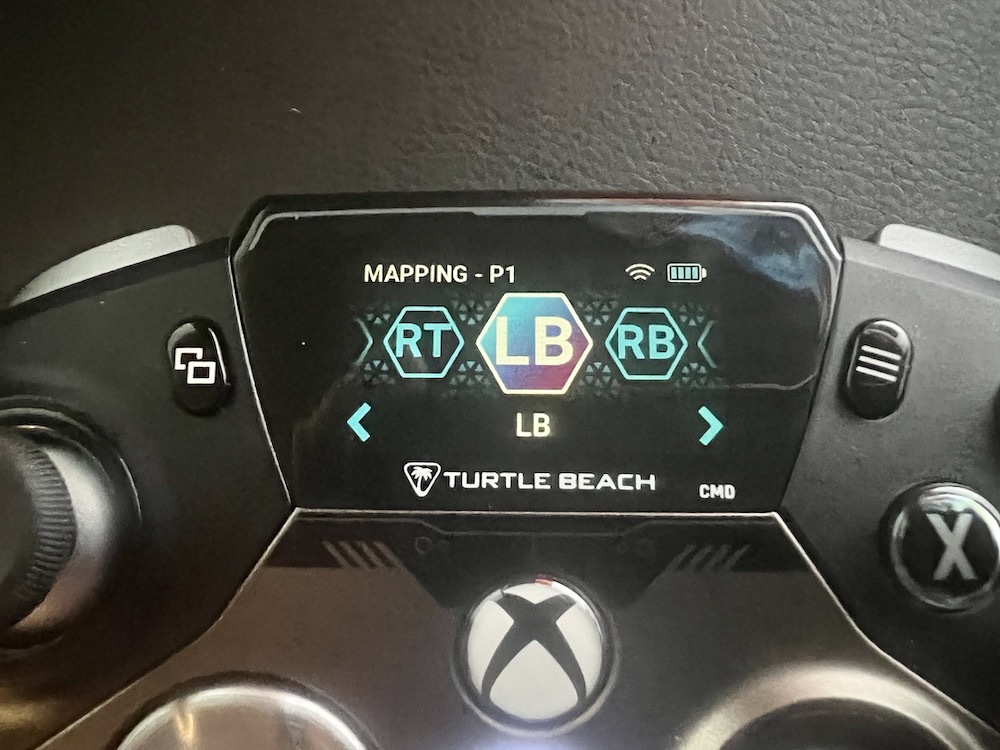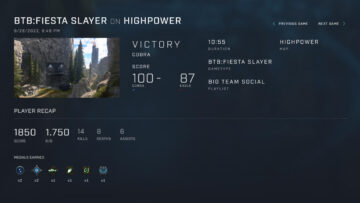Xbox owners haven’t had many wireless controller options in the Xbox Series X|S and Xbox One eras. Microsoft’s wireless protocol has largely been limited to standard first-party controller and high-end Elite Series 2. Great third-party wired controllers exist for Xbox, but we’re only now starting to see officially licensed wireless controllers from manufacturers outside of Microsoft. PowerA released a solid mid-range Xbox controller earlier this year, and now Turtle Beach has joined the party with the officially licensed Stealth Ultra, a premium alternative to the Elite Series 2. Turtle Beach’s Stealth Ultra is pricey at $200, but it’s an incredible controller that’s worth your consideration.
The Stealth Ultra retains the conventional Xbox controller layout. Though it doesn’t have the same heft to it as the Elite Series 2, it has superb ergonomics with textured grips and a premium finish. As far as inputs go, I actually prefer the Stealth Ultra to the Elite Series 2, which was a surprise since the Elite Series 2 has long been my favorite controller. Buttons, triggers, and sticks are a cut above their Elite Series 2 counterparts (and most controllers in general).
Face, shoulder, and rear buttons, as well as the D-pad, are all activated via microswitches. This reduces actuation distance, provides near-instant feedback, and produces a satisfying click comparable to pressing a gaming mouse. In addition to offering a higher level of precision, the microswitch buttons simply feel great. Turtle Beach is not the first manufacturer to implement microswitches into its controller; Razer’s Wolverine line for Xbox and PS5 offers microswitch inputs, too. If you’ve ever tried the Wolverine, the Stealth Ultra feels quite similar. If you’re new to microswitch inputs, you’re in for a treat.
There are four remappable back buttons built into the controller. These textured action buttons are located where your fingers tend to naturally rest, making them easily accessible. Back buttons and paddles are typically the first feature you expect with a competitive controller, and they don’t disappoint here. Microswitches are once again utilized to reduce input response time.
The one-piece, solid design of the Stealth Ultra’s D-pad looks peculiar at first glance, but my skepticism disappeared after spending some time with it. The recessed center is clever, allowing you to quickly pivot your thumb in any direction to register movements. Up, down, left, and right inputs are raised higher than diagonal directions that require pressing in two directions. It’s fairly similar to the default D-pad that comes with the Elite Series 2, with the main difference being the microswitches that offer increased speed.
We’ve seen an uptick of controller manufacturers combatting stick drift by using Hall Effect sensors. Unlike normal analog sticks, Hall Effect sticks don’t rely on components rubbing against each other to register movements. Instead, Hall Effect sticks use magnets to accomplish the same task. This makes the controller, in theory, immune to pesky stick drift. I can’t speak on the longevity of the Stealth Ultra’s sticks yet, but they feel excellent, and Turtle Beach is clearly quite confident in them–the word “antidrift” is emblazoned under each stick. Like other Turtle Beach products, the Stealth Ultra comes with a one-year manufacturer’s warranty.

Unlike many other premium controllers, the Stealth Ultra doesn’t have swappable parts. Physical customization features are limited to trigger locks and two pairs of rubber caps that wrap around the default sticks. There’s a pair of concave caps and textured dome caps. The main benefit of these is they effectively make the sticks larger, so they could be useful for those with larger hands (the default analog stick toppers are the same size as the first-party Xbox controller). But you won’t find support for swappable D-pads or modules here. Considering all of the controls are exemplary already, the lack of swappable parts doesn’t feel like a meaningful loss–especially when there’s so much to love with the internal customization.
I saved this part for last because if the core experience with a $200 controller is anything short of amazing, it doesn’t really matter that it has a built-in display that can be used to tinker with all sorts of settings. But the Stealth Ultra, as a pure controller, is indeed very good, so its novel feature only enhances an already great device.
You can think of the small display as built-in customization software. Whereas the Elite Series 2, 8BitDo Ultimate, Razer Wolverine V2, and other pro-style controllers require a proprietary app to make in-depth adjustments, the Stealth Ultra lets you customize your experience on the fly. With the press of the “+” button, you can switch from controlling the action on your TV to tinkering with settings on the small color screen, dubbed the Connected Command Display.

Gallery
Turtle Beach gave players a lot to work with here. For starters, you can cycle through 10 different profiles–a lot more than the usual three for these sorts of controllers. Within each profile, you can remap the four back buttons on the fly, create dead zones for sticks and triggers, adjust vibration intensity on left and/or right sides, and modify lighting color and effects. You can remap the back buttons to most inputs, with one notable omission being RS and LS clicks. Since many games use a stick press to initiate a run, it’s always nice to map a back button to that action instead.
The Stealth Ultra has RGB light strips on the handles. My hands blocked a portion of the light strip while playing, but the lights were visible next to the face buttons and left stick. Along with a wide assortment of hues, the light strips can pulsate, cycle through multiple colors, breathe, etc. Plus, you can adjust the intensity of the effects. Gradient color settings didn’t appear to work sometimes on my controller, but overall the lighting features are pretty cool. Don’t worry, though–you can turn the lights off altogether, if you so choose.
Many of the cool features found in Turtle Beach’s other Xbox controllers are present here, too. The optional Pro-Aim Focus Mode can be activated by mapping it to one of the back buttons. When on, Pro-Aim temporarily alters thumbstick sensitivity, which you can use for things like long-range shots. With a wired headset connected to the 3.5mm audio jack, you can enhance and mix your audio with onboard presets and sliders. What’s cool here is that Turtle Beach’s presets, though built into the manufacturer’s headsets, work with any wired headset. The marquee one, Signature Sound, actually does produce crisper, cleaner audio–however, if you have a DAC, you’ll still want to use that instead. Other presets alter bass and treble, and the last of the four enhances voices (chat and in-game audio). You can also mix your audio and mic settings with sliders.
The Connected Command Display can also display your notifications if you sync your phone to your Stealth Ultra. It’s a quirky feature that I guess stops you from looking at your phone while playing (though you’re still looking away from the screen and can’t respond on the controller). Personally, receiving texts or social media notifications while gaming sounds hellish to me, but this will probably be of interest to some. Plus, it has some gaming utility if you use Discord while playing online.


Being able to manage settings on the controller itself is a very convenient and useful feature. However, if you want to tinker with settings on a larger display, Turtle Beach has released Control Center 2, a new PC and Xbox app that syncs to the Stealth Ultra. Both versions of the app work fairly well and have easy-to-use layouts. The main issue I experienced is the app detected the wrong aspect ratio for multiple of my monitors, so I had to tinker with it to see all of the fields. The mobile version of the app is mainly for notifications, but you can cycle through profiles on it.
Though I focused on Xbox in this review, the Stealth Ultra is every bit as good on PC. In addition to supporting the 2.4GHz dongle used for the wireless connection on Xbox, you can sync the Stealth Ultra via Bluetooth on PC (as well as Android). Alternatively, you can use the lengthy USB-C to USB-A cable provided in the box for a wired connection. I didn’t notice any input latency with the dongle connection–it works as well as official Xbox controllers.
I was able to get 25-30 hours of battery life on a full charge with the LED lights turned off. Your mileage here will certainly vary based on lighting effects as well as screen-brightness settings. But if you run out of juice while playing, the Stealth Ultra’s docking station–which shares its style with the Elite Series 2–will fully charge the battery in two hours. The controller, dock, and cable can be stored in the main compartment of the included hardshell case. A small zippered pocket has enough room for the thumbstick caps and dongle.
The bottom line
The Turtle Beach Stealth Ultra is a worthy competitor to the Elite Series 2. At $200, it’s pricier, especially when you consider how often Microsoft’s pro-style controller is on sale, but the feature set offered here makes it stand out in a big way. Premium build quality, well-designed controls, and the onboard suite of customization features make the Stealth Ultra a controller that’s hard to knock in any meaningful way. Unlike some third-party alternatives for competing platforms, you’re not losing out on any major features by opting for Turtle Beach over Microsoft (except being able to turn your console on with the Xbox button). While I still think the Elite Series 2’s weighty feel is unrivaled, everything else on the Stealth Ultra is a notch above. The big question mark with the Stealth Ultra is how all the internal tech, specifically the screen, will hold up over time. If other manufacturers release Elite Series 2 competitors, the Stealth Ultra will be hard to beat. The bar has been set very high.
Disclosure: Turtle Beach provided a sample of the Stealth Ultra to test for this review.
- SEO Powered Content & PR Distribution. Get Amplified Today.
- PlatoData.Network Vertical Generative Ai. Empower Yourself. Access Here.
- PlatoAiStream. Web3 Intelligence. Knowledge Amplified. Access Here.
- PlatoESG. Carbon, CleanTech, Energy, Environment, Solar, Waste Management. Access Here.
- PlatoHealth. Biotech and Clinical Trials Intelligence. Access Here.
- Source: https://www.gamespot.com/articles/turtle-beach-stealth-ultra-controller-review-a-worthy-elite-series-2-rival/1100-6520062/?ftag=CAD-01-10abi2f
- 10
- 1000
- 75
- a
- able
- above
- accessible
- accomplish
- Action
- actually
- ADDITION
- adjustments
- after
- again
- Against
- All
- Allowing
- along
- already
- also
- alternative
- alternatives
- altogether
- always
- amazing
- Amazon
- an
- analog
- and
- android
- any
- Anything
- app
- ARE
- around
- as
- aspect
- At
- audio
- away
- back
- bar
- based
- bass
- battery
- BE
- Beach
- beat
- because
- been
- being
- benefit
- BIG
- Bit
- blocked
- bluetooth
- both
- bottom
- Box
- BREATHE
- build
- built
- built-in
- but
- button
- by
- cable
- CAN
- case
- Center
- certainly
- charge
- charging
- chat
- choose
- cleaner
- clearly
- COM
- comes
- competing
- Competitive
- Competitor
- competitors
- components
- confident
- connected
- connection
- Consider
- consideration
- considering
- Console
- Control
- controller
- Controllers
- controlling
- controls
- convenient
- conventional
- cool
- Core
- could
- counterparts
- create
- customization
- Cut
- cycle
- dead
- Design
- device
- didn
- difference
- different
- direction
- directions
- discord
- display
- distance
- does
- doesn
- don
- down
- each
- earlier
- easily
- easy-to-use
- Effect
- effectively
- effects
- elite
- else
- enhance
- Enhances
- enough
- especially
- etc
- EVER
- Every
- everything
- except
- exist
- expect
- experience
- experienced
- Face
- far
- favorite
- Feature
- Features
- feedback
- feel
- feels
- Fields
- find
- finish
- First
- Fly
- Focus
- focused
- For
- found
- four
- from
- full
- fully
- gallery
- Games
- Gamespot
- Gaming
- gave
- General
- Get
- glance
- go
- good
- great
- had
- Hall
- Handles
- hands
- Hard
- has
- Have
- haven
- Headset
- headsets
- here
- High
- High-End
- higher
- hold
- hours
- How
- however
- HTTPS
- i
- if
- image
- implement
- in
- in-game
- Included
- increased
- incredible
- indeed
- input
- inputs
- instead
- interest
- internal
- into
- Is
- issue
- IT
- ITS
- itself
- joined
- lack
- large
- largely
- larger
- last
- latency
- layout
- Led
- Led lights
- left
- Level
- licensed
- Life
- light
- Lighting
- like
- Limited
- Line
- ll
- located
- Locks
- Long
- longevity
- looking
- looks
- losing
- lot
- love
- main
- mainly
- major
- make
- MAKES
- Making
- manage
- Manufacturer
- manufacturers
- many
- map
- mapping
- mark
- matter
- me
- meaningful
- Media
- Microsoft
- mix
- Mobile
- mobile version
- mode
- modify
- modules
- monitors
- more
- most
- movements
- much
- multiple
- my
- New
- Next
- Nice
- normal
- not
- notable
- notice
- notifications
- novel
- now
- of
- off
- offer
- offered
- offering
- Offers
- official
- Officially
- often
- on
- onboard
- once
- One
- online
- only
- Options
- or
- Other
- out
- outside
- over
- overall
- owners
- Paddles
- pair
- pairs
- part
- parts
- Party
- PC
- personally
- phone
- physical
- Pivot
- Platforms
- plato
- plato data intelligence
- platodata
- platogaming
- players
- Playing
- playing online
- Plus
- portion
- precision
- prefer
- Premium
- present
- press
- pressing
- pretty
- probably
- Produce
- produces
- Products
- Profile
- Profiles
- proprietary
- Protocol
- provided
- provides
- ps5
- quality
- question
- quickly
- quite
- raised
- ratio
- Razer
- RE
- really
- receiving
- reduce
- reduces
- register
- release
- released
- rely
- require
- respond
- response
- REST
- retains
- review
- rgb
- right
- Rival
- room
- rubber
- Run
- s
- sale
- same
- satisfying
- saved
- Screen
- see
- seen
- sensors
- Series
- set
- settings
- Shares
- Short
- shots
- sides
- signature
- similar
- Simply
- since
- Size
- skepticism
- small
- So
- Social
- social media
- Software
- solid
- some
- sometimes
- sound
- speak
- specifically
- speed
- Spending
- stand
- starters
- Starting
- Stealth
- still
- stops
- stored
- Strip
- style
- suite
- support
- supporting
- surprise
- Switch
- sync
- task
- tech
- tend
- test
- than
- that
- The
- their
- Them
- theory
- there
- These
- they
- things
- think
- this
- those
- though
- three
- Through
- time
- to
- too
- treat
- tried
- trigger
- triggers
- true
- turn
- turned
- Turtle Beach
- tv
- two
- typically
- Ultra
- under
- unlike
- unrivaled
- up
- USB-C
- use
- used
- using
- usual
- utility
- utilized
- ve
- version
- versions
- very
- via
- VOICES
- Walmart
- want
- was
- way
- we
- well
- were
- What
- when
- where
- whereas
- while
- wide
- will
- wireless
- with
- within
- won
- Work
- works
- worry
- worth
- worthy
- wrong
- xbox
- Xbox One
- xbox series
- Xbox Series X|S
- year
- yet
- you
- your
- zephyrnet











